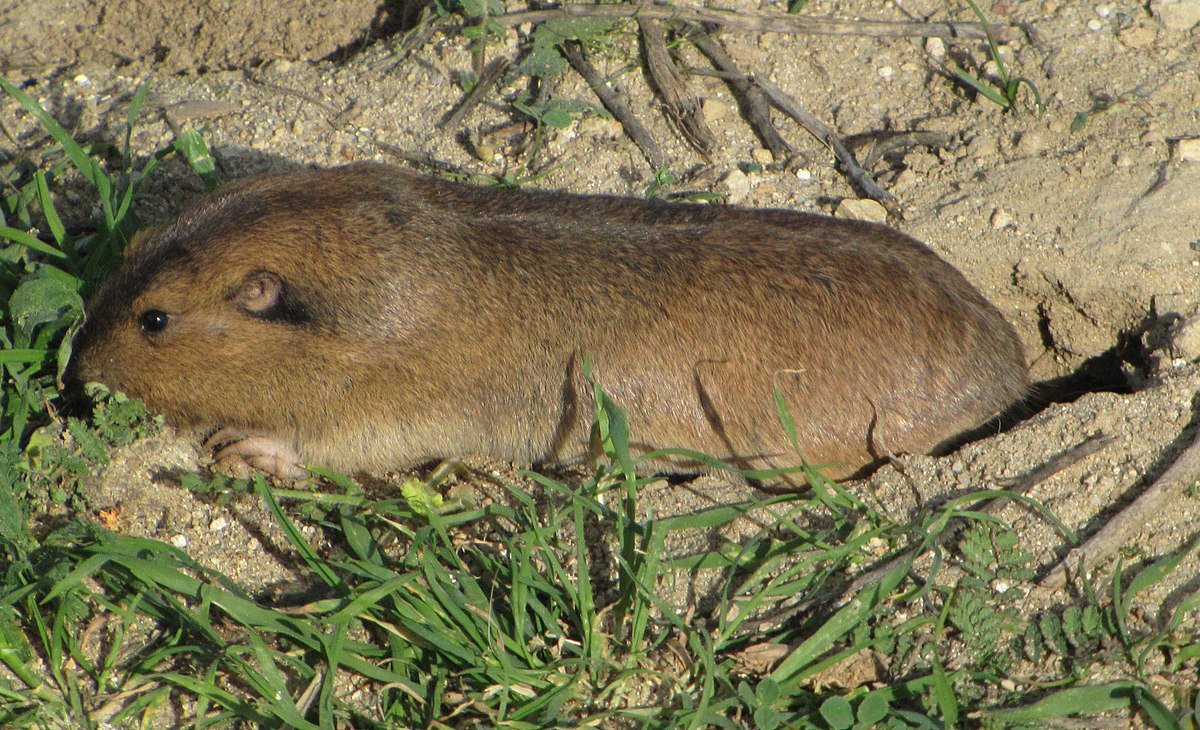

Distribution & Karyotype Variation in the Southern Pocket Gopher
(Thomomys umbrinus) (Geomyidae: Rodentia: Mammalia)


Pocket Gophers
are fossorial (tunnel-dwelling) rodents that create and
inhabit extensive underground burrow systems, from which they
emerge only rarely. Only certain types of soil are suitable for
burrows, in consequence the
ranges are highly disjunct. More than 200 subspecies of T.
umbrinus have been recognized in the southwestern
United States and northern Mexico. They vary widely in pelage
color, typically so as to match the local soil type. Karyotypes also vary,
often over a few meters, which create effective barriers to
hybridization.
The
karyotypes below can be shown to be related by fission /
fusion of metacentric / telocentric chromosomes,
which changes the diploid chromosome number (2N)
without changing the number of arms (FN, Fundamental Number)
or DNA content. The pattern of G-bands
allows similar reconstructions to those done with polytene
chromosomes in Drosophila.
